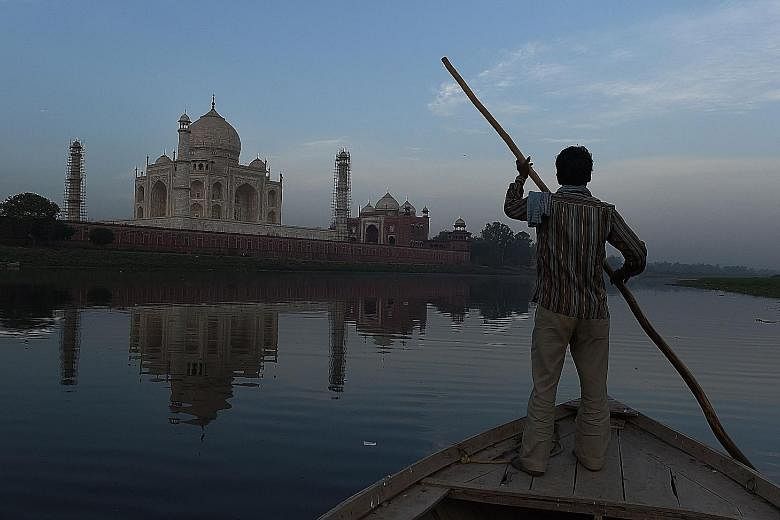NEW DELHI • Over the centuries, the Taj Mahal has endured its share of attacks - plundered by the Jats of northern India and looted by British soldiers, among other indignities.
In recent years, officials have worried that growing air pollution could permanently darken the tomb's brilliant white exterior.
But few people anticipated the latest affront - millions of mosquito-like insects, their numbers supercharged by nutritious algae blooming profusely along the banks of the polluted Yamuna River nearby.
Like generations of romance-driven human couples before them, the bugs have swarmed the Taj Mahal on a mating flight, excreting a green substance on parts of its marble walls.
The Yamuna has suffered mightily in recent years from the dumping of solid waste in its waters, says an environmental activist in Agra, India, the site of the Taj Mahal.
"I have been constantly watching how the river pollution has gone from bad to worse," said Mr D.K. Joshi, who filed a petition over the insects in the National Green Tribunal, an environmental court, last week. "The encroachments on and around the riverbed, the sewage going directly into the river" are choking it, he said.
The National Green Tribunal on Monday issued notices to central and local authorities, including the Ministry of Environment and Forests, telling them to respond to the petition this month.
With India's cities ranking among the most polluted in the world by the World Health Organisation, public concern over toxic air and water is mounting.
The Taj Mahal was built on the orders of Shah Jahan, a Mughal emperor, as a mausoleum for his beloved wife, and it was finished in 1648.
The green secretions on the back wall of the Taj Mahal, a residue of the chlorophyll the insects consume, are not themselves harmful to the monument beyond the discolouration, said Dr Girish Maheshwari, the head of the department of entomology at St John's College in Agra, who analysed the problem for the Archaeological Survey of India.
But the explosive numbers of the insects - called Goeldichironomus - were an alarming indication of how polluted the river has become, he said, since their eggs thrive on phosphorus and sediment in the water.
And he worried over the "highly synchronised" swarm of insects that descend on the monument in the evening. "They can create problems for the visitors," he said.
The walls have been cleaned with clay packs, said Mr Manoj Bhatnagar, an official in the Agra office of the archaeological survey. The excretions could also be removed with water, but the day-to-day cleaning is "very challenging".
NEW YORK TIMES

